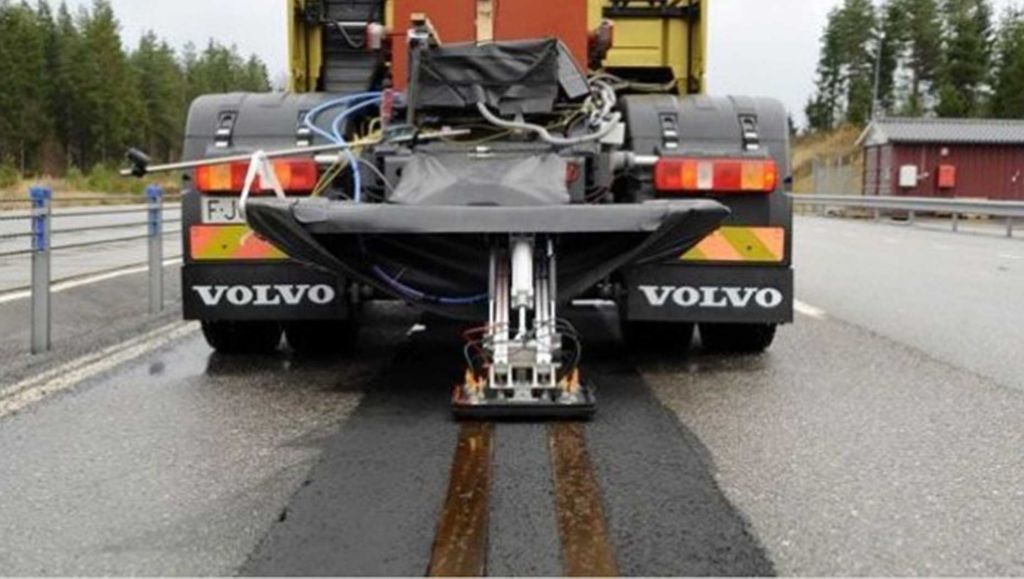Electric Roads: A niche solution for confined areas?


An electric road, eroad, eHighway or electric road system (ERS) is a system that allows for power transfer between a vehicle and the road that it is travelling on. Electric roads are classified into three categories based on how the charging takes place:
When a car or truck is travelling on a road equipped with any one of these technologies, the energy will go directly into the propulsion system or be used to charge on-board batteries. But once the vehicle is on a normal road, it will switch to an electric or hybrid motor or a combustion engine.
The use of electric roads is rather limited today although there are some pilot projects happening in collaboration with automotive manufacturers, research institutes, governments and energy companies. One such project is running in Lund, Sweden while in Italy the government plans to install a 6 kilometer eHighway in the north of the country. In California a demonstration project is taking place near the ports of Los Angeles and Long Beach.
Electric roads are beneficial insofar as providing a cleaner alternative to the combustion engine—particularly if the energy used comes from a renewable source like wind or solar. In the case of conductive charging, electric roads are also quite efficient. The company Elways AB for example reported an 85-95% efficiency for a segmented conductive solution for cars and trucks which is now being tested as a part of the eRoadArlanda project.
But that’s pretty much where all the advantages with electric road systems end. While almost all of the alternatives to diesel are far from being mainstream, many have come a lot further than ERS. Today there is not much real life data to support its reliability and with the exception of the pantograph (which is 100 years old), all the other charging types are novel, immature technologies.
eHighways are also expensive; installing the charging infrastructure means significant investment into laying out roads, installing electricity lines and also maintaining them. They also have the potential to cause lengthy disruption to existing traffic flow as infrastructure gets updated. One study estimates that the installation of a dynamic inductive system would be 3 weeks per 100 meters while a conductive overhead system could take 1 month to install 10 kilometers. Disruption could be minimized if ERS construction coincided with planned maintenance work but that would really limit how quickly the technology could be deployed.
The complexity of ERS also means that many actors including governments, municipalities, power suppliers and freight companies would have to work together. It would also require some cross-border cooperation in places like the EU where trucks traveling across the region would need to be adapted with the same technology to make use of the roads. Standards for charging so that any type of vehicle could make use of electric roads are under development.
One of the main arguments for electric roads is the role they could play in reducing the range anxiety that comes with driving an electric truck. The thinking goes that EVs could travel longer distances and use smaller batteries if electric roads are used to transfer power directly to the vehicle’s propulsion or to charge the onboard battery. This sounds like practical solution but it quickly falls apart under closer scrutiny.
The first challenge is interoperability which means that an electric road system would have to be able to provide power to any kind of vehicle. Today no standards and system architecture exists for the transfer of power from the grid to the ERS to multiple vehicles. The second challenge comes from improvements in the range of electric truck batteries which could quickly make ERS charging redundant. Consider the fact that today a fully charged electric truck can travel 300 kilometers which covers approximately 40% of all transport work in the EU. This range is expected get better in the near future through improvements in lithium-ion batteries, discovery of new cell materials, better battery management systems and cooling technologies. There is also high hopes for solid-state batteries which could increase range up to 1600 kilometers on a single charge.
The third challenge is static or plug-in charging systems which is the only system with established global standards and proven technology. Plug-in charging stations are quickly growing in numbers; as of 2019 there were more than 170,000 charging stations in Europe and more than 68,000 in the United States. Though most of this infrastructure is for cars, it’s important to note that the technology in the power dispensers is Combined Charging System (CSS) which can be used for both cars and trucks. Already a consortium of truck manufacturers is working together to increase CSS charging capacity to one to three megawatts so that that existing infrastructure can support commercial vehicles. Governments around the world are also setting out plans to expand networks and standardize CSS charging technology. There are no such clear directives from governments when it comes to ERS.
Last but not least, using roads to charge EVs seems rather unlikely given the rise of alternatives like hydrogen fuel cells. There has been a lot of buzz around hydrogen particularly in the area of demanding and long-haul transport where it can be used as a range extender for electric trucks. Hydrogen has a number of advantages such as a short and easy refueling process and high energy density. With just 80 kg of hydrogen a truck can travel up to 800 kilometers! This would be sufficient for most long-haul assignments and with enough hydrogen refueling infrastructure in place, there would be no need to charge the truck while driving.
Does all of this mean that there is no place for electric roads in the future of transport? Not entirely. There could be a good case for ERS for specific routes or closed systems in confined areas where electrifying roads and using trucks would be a good alternative. They could also be a suitable solution for autonomous trucks running hub-to-hub transport operations.
Given all the challenges with ERS, I believe the industry should be looking at more feasible options like electromobility, hydrogen, Bio-LNG and some biofuels such as HVO to de-carbonize transport. To help haulage operators get a better grip on alternative fuels, I put together a guide that looks at the pros and cons of each fuel source. The guide also includes a checklist with all the things transport owners should think about before investing in a truck with an alternative driveline.

Lars Mårtensson works as Environment and Innovation Director at Volvo Trucks.